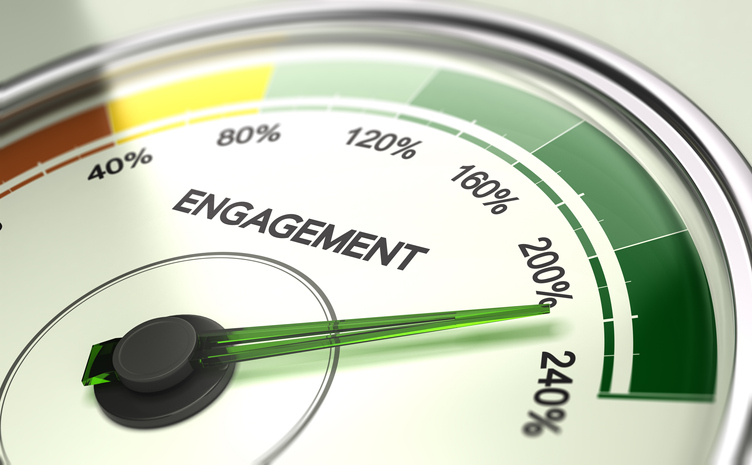When faced with a stressful or dangerous situation, the mind and body react naturally by shifting into a heightened state of readiness – the fight-or-flight response. That can be a good thing if you need to react quickly to danger. However, sometimes the mind and body overreact and enter a frozen or detached state, leaving you unable to think clearly or take appropriate action. Sometimes, too, anxiety disorders or long-lasting reactions to trauma can result in high-alert reactions when they’re not needed, which can interfere with daily life and leave you exhausted. Anxiety can also cycle in a deepening spiral, with an initial anxious response triggering even greater anxiety or panic.
Grounding techniques – practices that help distract from fears and unwanted memories – offer a way to control unhelpful anxiety responses. They can help you pull out of a frozen or detached state so that you can think more clearly and choose how to act. They can help you break free from an anxiety spiral, giving you a greater sense of control and confidence.
Here are a wide range of grounding techniques to try when your anxiety feels overwhelming or out of control. Try one, two or a few of them until you find something that works for you.
Physical and Sensory Grounding Techniques
- Put both of your feet on the floor or ground. Stomp them several times, shift weight or wiggle your toes, paying attention to the sensations in your toes, feet and legs.
- Press or rub your palms together, noticing the pressure, warmth or coolness, and sensations of touch.
- Touch or pick up a small item that’s within reach. Notice its texture and weight and whether it is warm or cool.
- Tap your fingers in your lap. Pay attention to sensations in both your fingers and your lap, and to the rhythm you are tapping. Try alternating left and right taps.
- Put your hands in water (if available), focusing on what it feels like on different parts of your hands.
- Hold a piece of ice (if available) in your hand, noticing the sensation of coldness and the feeling of the water on your skin as the ice melts.
- Dip your face in cold water and hold it there for a few seconds, or splash cold water onto your face. The sensation of the cool temperature on your skin can help interrupt an anxiety spiral.
- Breathe deeply and slowly. Place a hand on your belly, and feel it move with your breaths.
- Savour the taste of food or drink in your mouth or the scent of a spice, herb or bar of soap.
- Listen to the sounds around you, whether it’s from traffic, bird songs, the wind or conversation. Identify the sounds in your mind, and let them remind you of where you are.
- Move your body by stretching, jumping up and down, walking or jogging (even if it’s just a few steps). Pay attention to how your body feels as you move and the sensation as your feet touch the ground.
Mental Grounding Techniques
Focusing your mind on a mental task can help you pull out of an anxiety reaction:
- Name each member of your family, their ages and something special about each of them.
- Look at an object, and name its colour as precisely as you can (not just red or blue but maroon, crimson, turquoise or royal blue).
- Play a memory game. Remember as many details as you can about a familiar place, or look closely at a photograph, then turn it over and try to recreate it in your mind with as much detail as possible.
- Count backward from 100. Try it by ones, sevens or another number.
- Spell your name or the names of people you know backward.
- Recite something, a poem or passage from a book that you know well, or the words to a favourite song.
- Think of an ordinary activity, and describe to yourself each step it requires.
- Play a category game. Choose a category, like animals, sports teams, rivers or vegetables, and name as many things as you can in that category in a minute or two.
Soothing Grounding Techniques
- Picture the face of someone you love, or imagine their voice and what they might say to calm you.
- Call a favourite place to mind – what it looks like, its sounds and smells, what it feels like to be there.
- Touch something comforting, such as a soft or smooth fabric on your bedding or an item of clothing.
- Spend a few quiet minutes with your pet, or imagine what it would be like to be sitting with it.
Seek help.
A professional counsellor can help you find strategies for dealing with your anxiety, including ways to use these and other grounding and calming techniques. A counsellor can also help you identify the root causes and triggers of your anxiety and can guide you to effective treatment.
For More Information
30 Grounding Techniques to Quiet Distressing Thoughts, Healthline
https://www.healthline.com/health/grounding-techniques
Grounding Techniques: Step-by-step guide and methods, Medical News Today
https://www.medicalnewstoday.com/articles/grounding-techniques
Grounding Techniques, Therapist Aid (Woody Schuldt, Licensed Mental Health Counsellor [LMHC])
https://www.therapistaid.com/therapy-article/grounding-techniques-article
This article was co-authored and reviewed by Galina Itskovich, Licensed Clinical Social Worker (LCSW)-R, Master of Social Work (MSW), Bachelor’s in Psychology; Ana Beirao, Clinical Psychologist, Member of the Board of Portuguese Psychologists and Clinical Team Lead for Workplace Options; and Eliana Guerreiro, Employee Assistance Programme (EAP) Counsellor, Clinical Psychologist and Case Manager for Workplace Options, and also a Member of the Board of Portuguese Psychologists.
Galina Itskovich has a private practice in Brooklyn, New York; more than 20 years of experience in the fields of mental health and developmental disorders; areas of expertise include trauma, critical incidents/disaster mental health and early childhood/developmental disorders. She is published many times in academic journals; has extensive teaching, presenting and supervisory experience; and is a certified ‘Psychological First Aid’ Trainer.



































